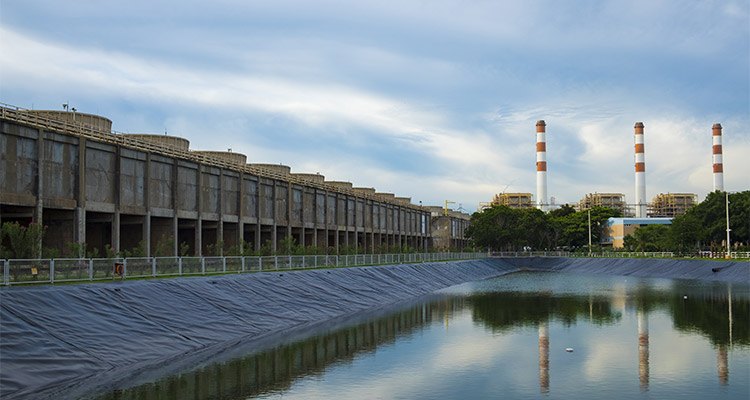When comparing the strength of geomembrane liners and containment systems on the market today, this question arises, “Does thickness matter?” While logic may say it does, in reality, thickness does not equate to a better liner product. The geomembrane market is loaded with a variety of options for liners and containment systems. Among the most common are polyvinyl chloride (PVC), ethylene propylene diene monomer (EPDM), high-density polyethylene (HDPE) and reinforced polyethylene (RPE). At BTL, we manufacture custom liners from reinforced polyethylene (RPE), reinforced polypropylene (RPP) and low-density polyethylene (LDP). Our BTL 40 is the strongest RPE liner on the market today. How does this liner compare to other available geomembrane liners?
Ethylene Propylene Diene Monomer (EPDM)
EPDM is a type of geomembrane liner made from rubber. It is used for roofing as well as for water gardens and smaller residential projects.- Heavyweight compared to other geomembrane liners
- Good flexibility
- Poor chemical resistance
- Low puncture resistance
- Stretchable, but increases ease of puncture when stretched
- Difficult to seam
Polyvinyl Chloride (PVC)
Another geomembrane commonly used in a broad range of projects is PVC. Before the development of RPE, PVC was arguably the most common geomembrane on the market.- Primarily used for golf ponds, detention ponds, and irrigation reservoirs
- Good flexibility
- Flexibility comes from the use of plasticizers, which can leach into water
- Cost effective, compared to other forms of geomembrane
- Twice as heavy as RPE
- More puncture resistant than EPDM
- Low UV protection
- Needs to be replaced more frequently
High-Density Polyethylene (HDPE)
HDPE is currently the most commonly used geomembrane in the world, due to its availability and relatively inexpensive cost. However, with the introduction of BTL liners in the European market, this is beginning to shift.- Typically used for landfill and mining operations
- Less flexible than EPDM and PVC
- Good chemical resistance
- Good UV protection
- Relatively heavy, and thicker than the other geomembrane liners
- Requires installation by certified welding technicians and specialized equipment
Reinforced Polyethylene (RPE)
BTL’s double-scrim reinforced polyethylene liners were developed for applications where strong puncture and UV resistance are high and seepage rates are low.- Widely used in residential, agricultural, commercial, mining and energy operations
- Easy to install, can prefabricate before installation
- Does not require underlayment
- Safe for containment of water for fish, plants and humans
- Excellent UV protection
- Outstanding chemical resistance
- Unparalleled tear and puncture resistance
- Good flexibility, down to -65° F
- Lightweight



